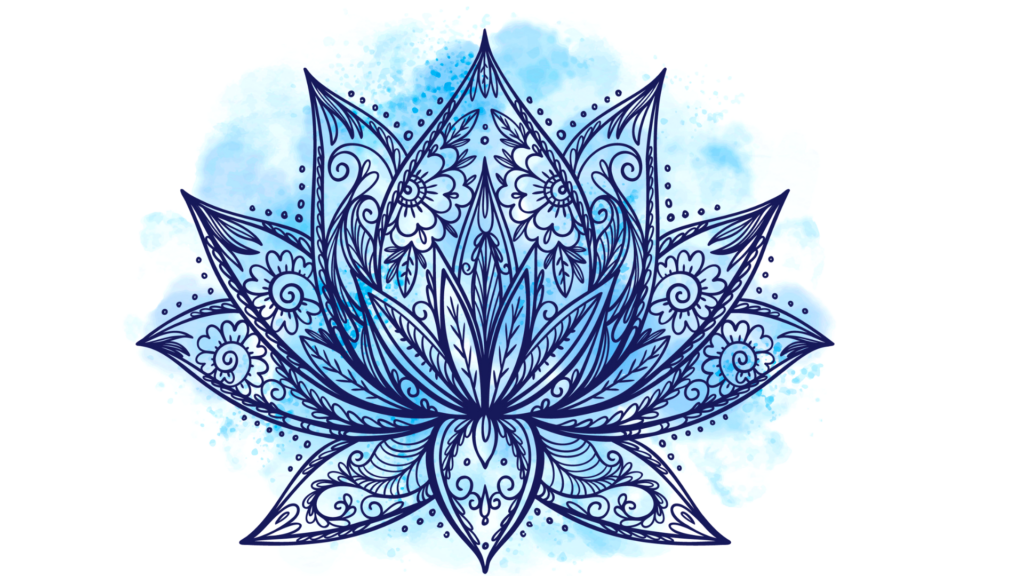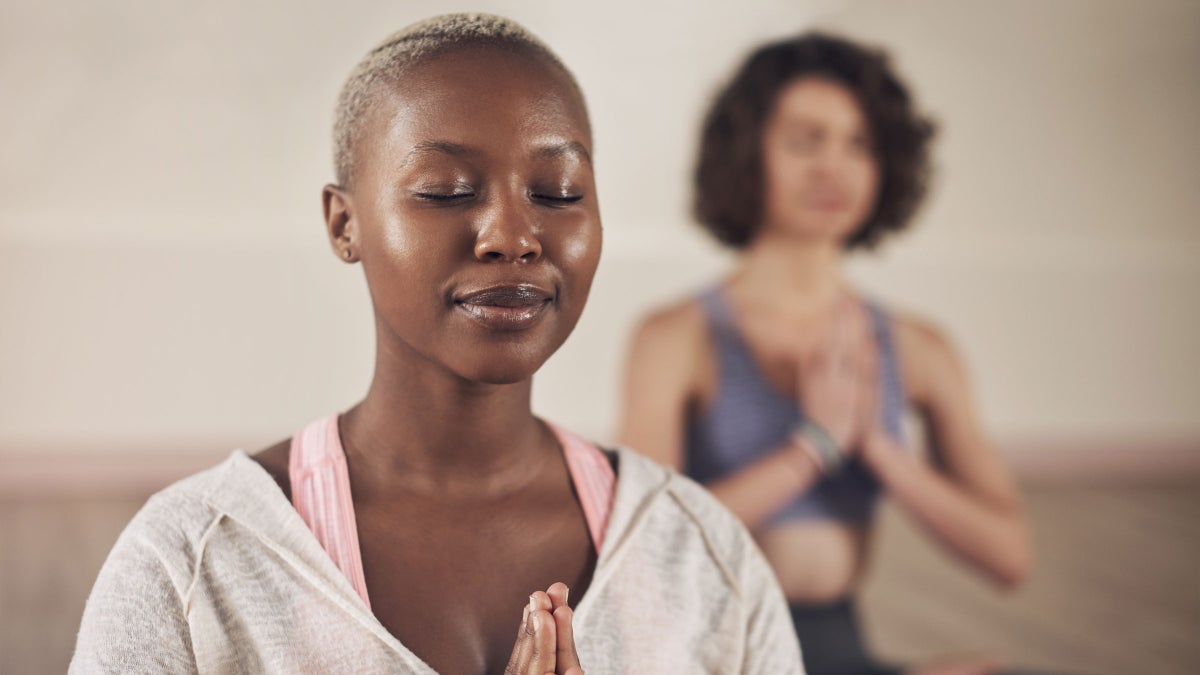
“], “filter”: { “nextExceptions”: “img, blockquote, div”, “nextContainsExceptions”: “img, blockquote, a.btn, a.o-button”} }”>
Heading out the door? Read this article on the new Outside+ app available now on iOS devices for members!
>”,”name”:”in-content-cta”,”type”:”link”}}”>Download the app.
Whether it’s a kink in your neck, tight shoulders, or an achy back, the ways stress manifests in the body are all too real (and seemingly endless). Although you can’t avoid stress entirely, practicing yoga is one way to offer yourself a much-needed release. With its quiet emphasis on breathing and stillness, yoga for stress relief may just become your new anti-burnout ritual—especially on your most chaotic days.
How Does Yoga Relieve Stress?
Practicing yoga triggers the body’s parasympathetic nervous system, which then signals the body and mind to relax. Slowing your breath, as you do in yoga, is also calming, as it can help lower your blood pressure and heart rate, reduce anxiety, and quiet your thoughts.
And you don’t need to practice intensely to experience the benefits of yoga. Simple postures can allow you to tune into your body, stretch and strengthen your muscles, release tension, and ease pain.
Yoga has also been shown to decrease the levels of cortisol, or the stress hormone, in the body. This in turn can improve your sleep, digestion, immune system, all of which are impacted by stress. It can even help restore dopamine and serotonin (known as “feel good” hormones) in the brain. Yoga also stimulates the vagus nerve—otherwise known as the well-being nerve—which, according to research, allows people to more easily shift from a stressed to a relaxed state.
But the best thing about it is that the more you practice, the more prepared you’ll be to mange daily stress and emotionally and physically fraught situations as they arise.
10-Minute Yoga for Stress Relief Practice
Some days, it might be all you can do to carve out a few minutes of mat time. Other days, you may want to add a few special touches, personalizing your space to help create a serene practice area you can retreat to whenever you need it, says Lisa Jang, yin yoga teacher and trainer. (Perhaps a lit candle or soothing playlist.) Jang recommends letting those around you know you’re seeking a few minutes of dedicated quiet so you can fully immerse yourself in “you” time.
So hang the “do not disturb” sign, silence your phone, and sink into Jang’s yoga for stress relief practice.
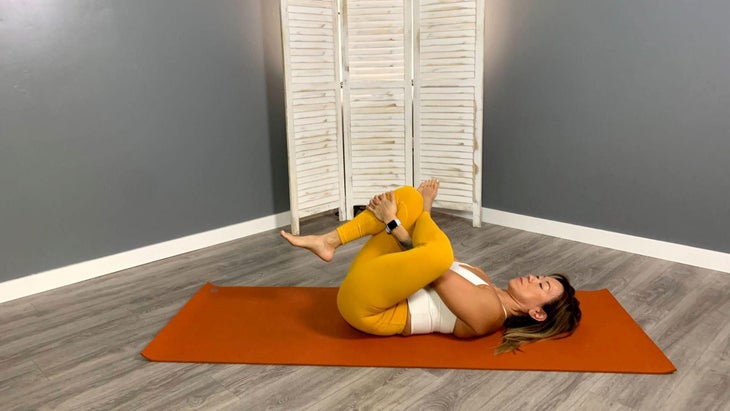
1. Reclined Figure-4 Pose
If you’re experiencing muscle tightness in your lower body—perhaps as a result of prolonged sitting—Jang recommends a reclined variation of Pigeon Pose. “This one is my go-to for my glutes,” she says. “There’s something about how I can just tilt a little from side to side to feel the tension release.” For more support, you can opt to press your front foot against a wall.
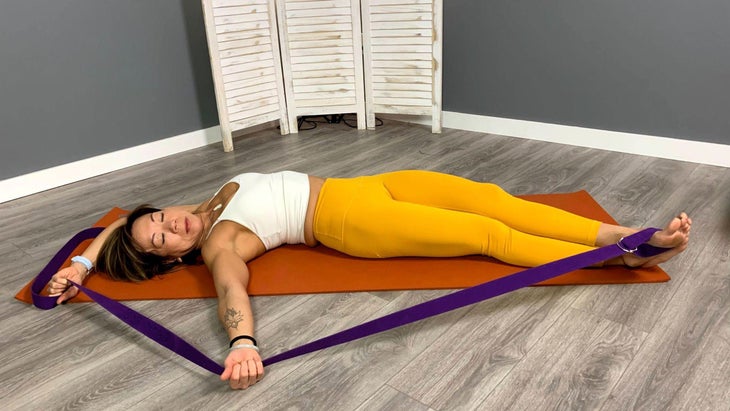
2. Bananasana
This yin yoga posture is Jang’s top pick for a side-body stretch. “Releasing the intercostal muscles and obliques makes you breathe more fully into your body,” she explains. She opts to practice Bananasana with a strap; you can use a belt or towel, or forgo a prop altogether.
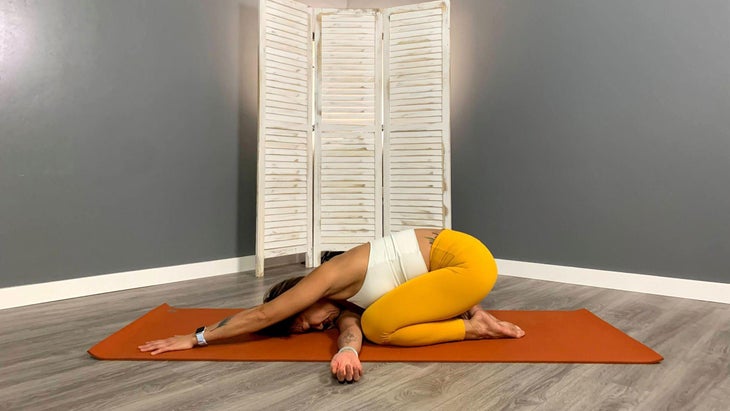
3. Thread the Needle Meets Child’s Pose
If you’ve been overwhelmed while hunching over your laptop or phone all day, this is an effective pose to include in your stress-relieving practice. Child’s Pose (Balasana) can already be a calming posture, says Jang. Adding this arm variation from Thread the Needle also allows for a deeper shoulder stretch.
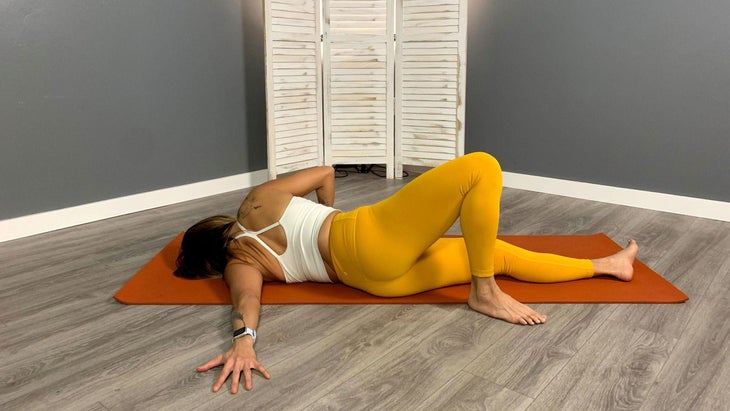
4. Open Wing Pose
Similar to Thread the Needle, this pose helps relieve tension in your shoulders. It’s also an opportunity to focus on slowing your breath and releasing tension throughout your upper body. You may find yourself wanting to come out of this pose after a breath or two (and we don’t blame you). Linger for as long as is comfortable before coming out of it.
This article has been updated. Originally published February 9, 2022.




